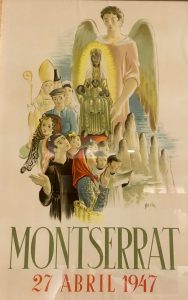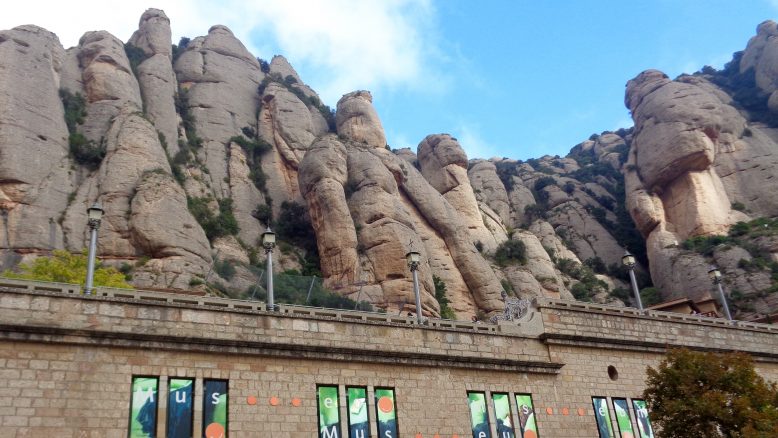The domed pinnacles of stone at the peak of Montserrat are claimed to have been an inspiration for much of the architectural work of Gaudi and especially for the apartment complex La Pedrera. All this is great story, but in this natural citadel, carved by millenniums of nature there were holy spots and moments. The Dali painting and the Picaso and the Monet and the Carvagio were all surprises. Each of these works torn away from their more traditional staging to appear in this mountain-top museum. It was a bit like the transfiguration: let us build a temple here! This time they did, inspired by jaw dropping awe. A spiralling cypress tree reaching to the heavens acts as guide and guard.
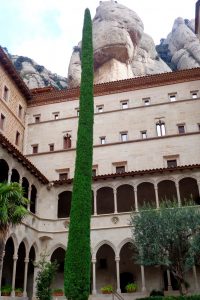
In the church a black Madonna. The rendering of the Madonna as an African woman created doubt and authenticity, historical accuracy and myth. That this statue should be on this transfiguring place may be more divine than we can imagine.

In the gallery – a family gathering. From the collection of Picasso this playful family dancing in celebration and the very early paintings of both an altar boy and a peasant create a triptych of impossibility and hope. The family reunited for celebration.
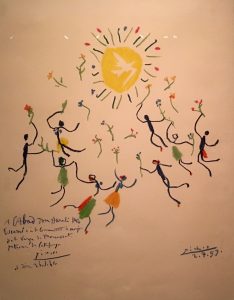
In the walkway an inverted figure. A sculpture turned inside out. Introspection or a new fourth step awareness.
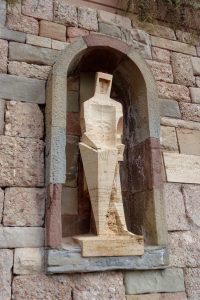
Wherever the eye wandered there was magic and mystery, story and history.
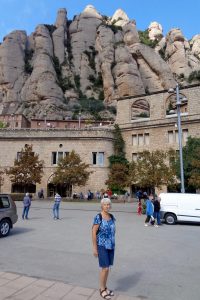
The poster printed the year I was born, has the choirs singing mass for the past 70 years. The reverberations of music were welcome to my ears as my Latin and Spanish were not ready for theological content. This mountaintop experience was more than inspiration — it was a vision of hope that the creation can do in millenniums what we often fail to do in a lifetime.
